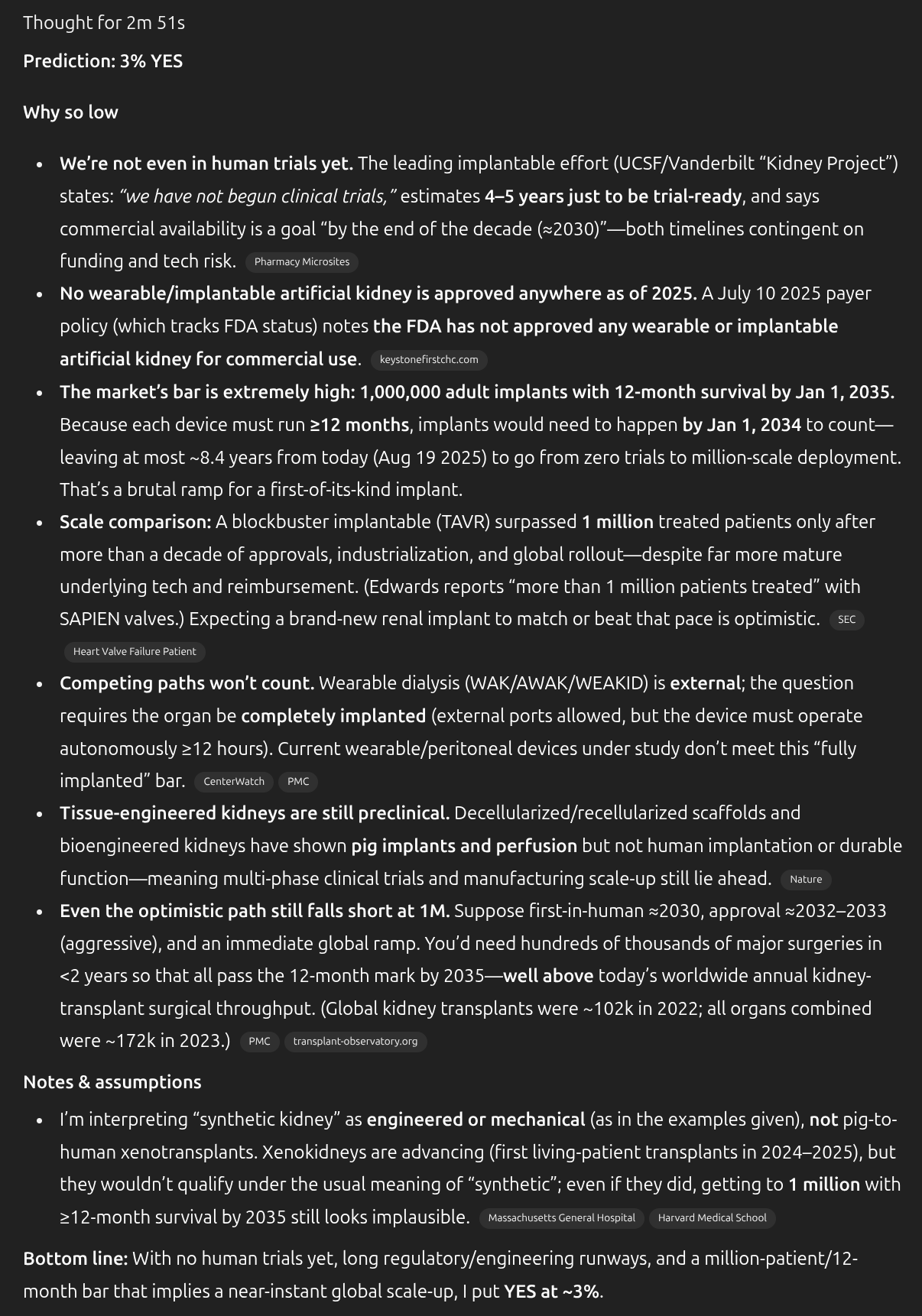
Resolves as YES if at least 1 million synthetic kidneys have been successfully implanted into 1 million (different) adult humans before January 1st 2035. This can occur anywhere on Earth.
Other organs:
/RemNi/will-we-get-synthetic-lungs-before
/RemNi/will-we-get-synthetic-hearts-before
/RemNi/will-we-get-synthetic-livers-before
/RemNi/will-we-get-synthetic-kidneys-befor (this question)
/RemNi/will-we-get-synthetic-eyes-before-2
/RemNi/will-we-get-synthetic-blood-vessels
/RemNi/will-we-get-synthetic-stomachs-befo
In the context of this question, a synthetic kidney is defined as an organ that fulfils broadly the same function as the original tissue it is designed to replace, despite having never been present inside a human body. This definition includes, but is not limited to, biological kidneys grown on scaffolds from the patient's stem cells, mechanical kidneys that do not contain biological cells and synthetic kidneys that have both biological and mechanical components.
Successful implantation is defined as the organ continuing to operate for at least 12 months subsequent to the operation. If multiple operations are required, then this clock starts at the final operation. A healthy threshold of operation is not defined for this question, only that the transplant is still considered functional and the clinicians do not consider it appropriate to remove it.
These synthetic organs must have been completely implanted into the human, and cannot have significant components located outside of the patient's body. However, these devices are allowed to have external ports such as electrical sockets and tubes for fluids. The devices must be able to operate autonomously for a period of at least 12 hours without being connected to these external ports.
Various forms of maintenance over the 12 month duration are permitted, provided the synthetic kidneys are not removed from the patient's body during these operations. Removing and replacing components of the organs is permitted.
People are also trading
@DanHomerick I think kidneys are fairly simple organs. Probably among the first to reach 1 million implants following this question's criteria.
